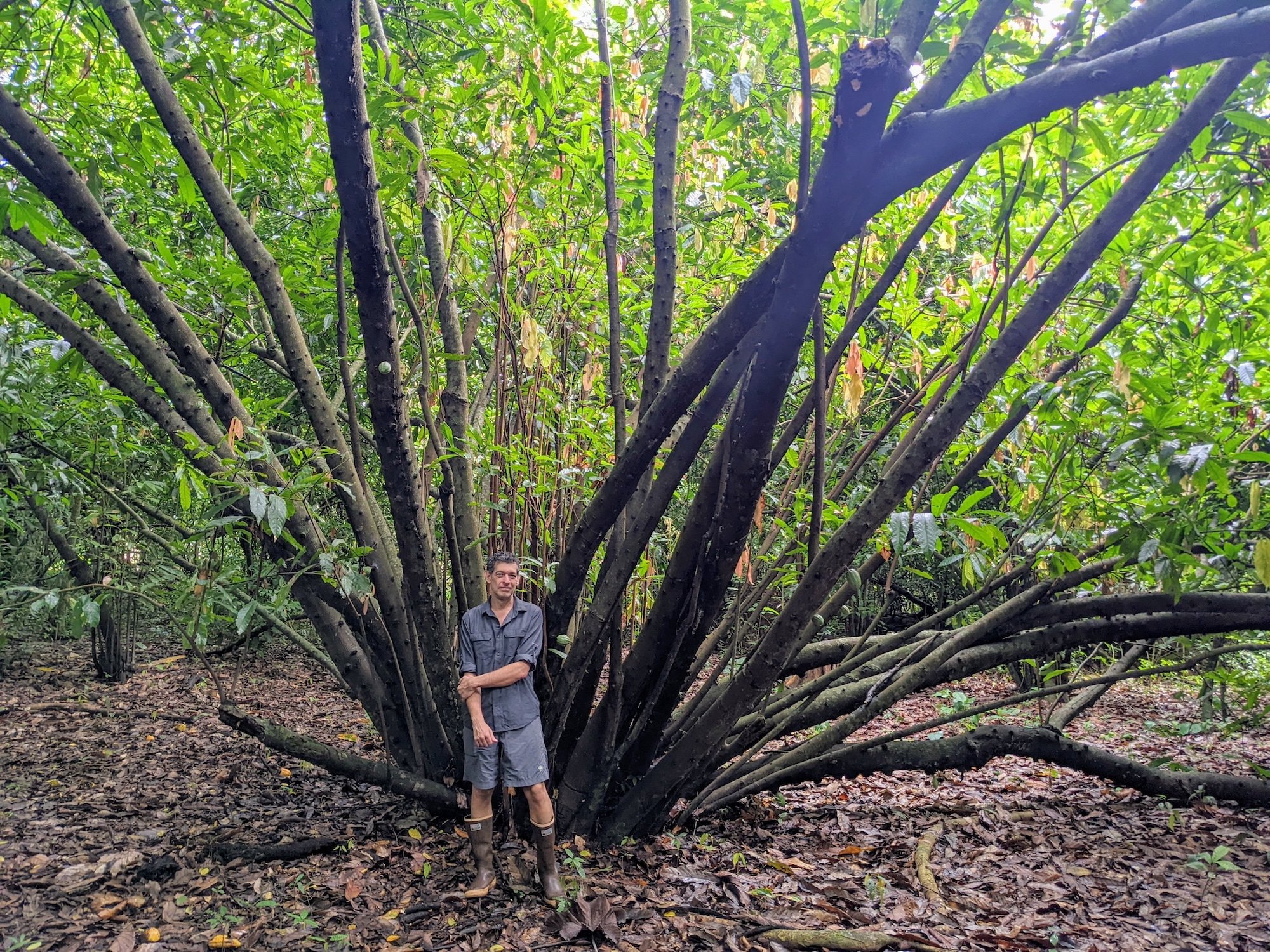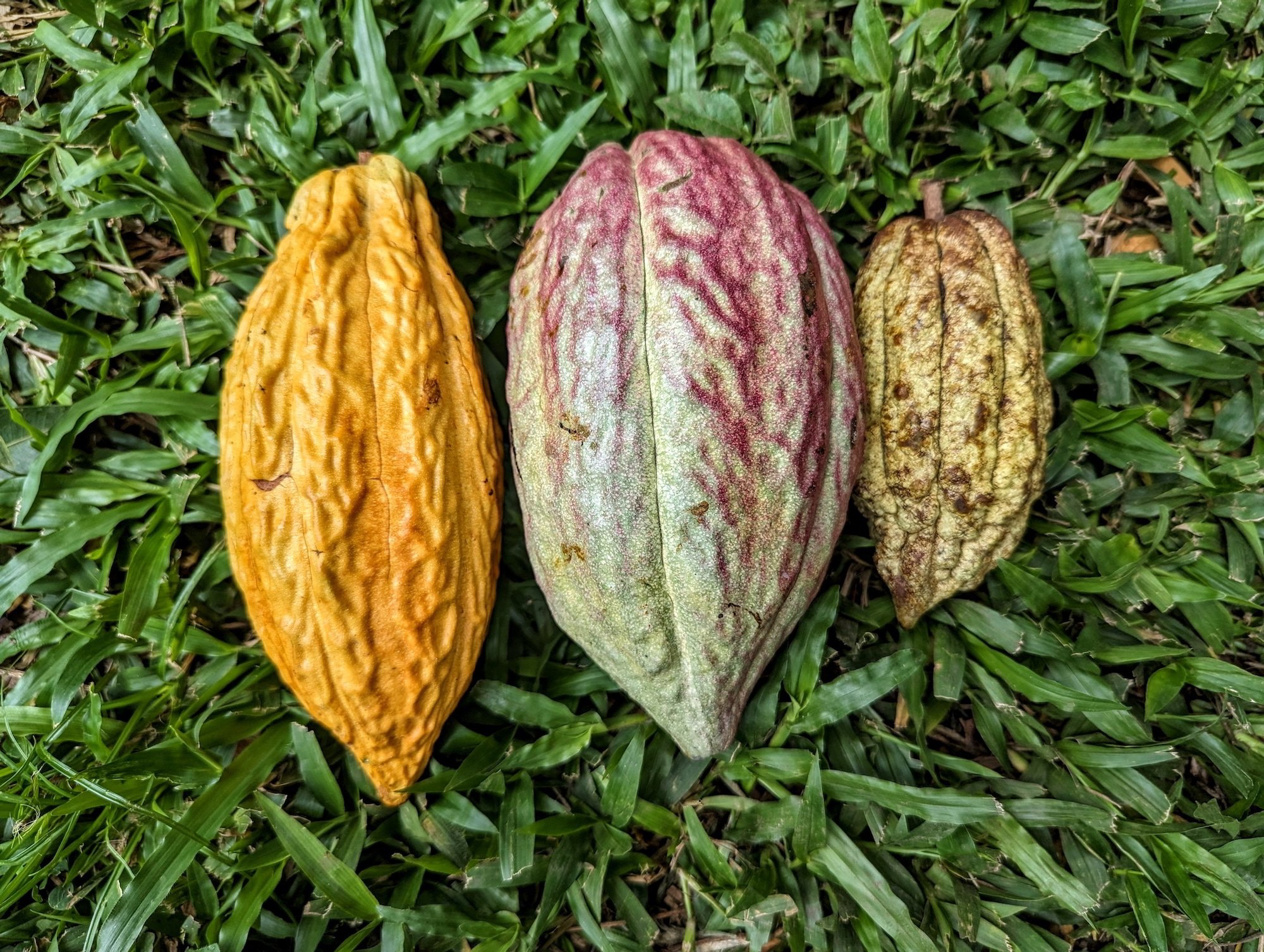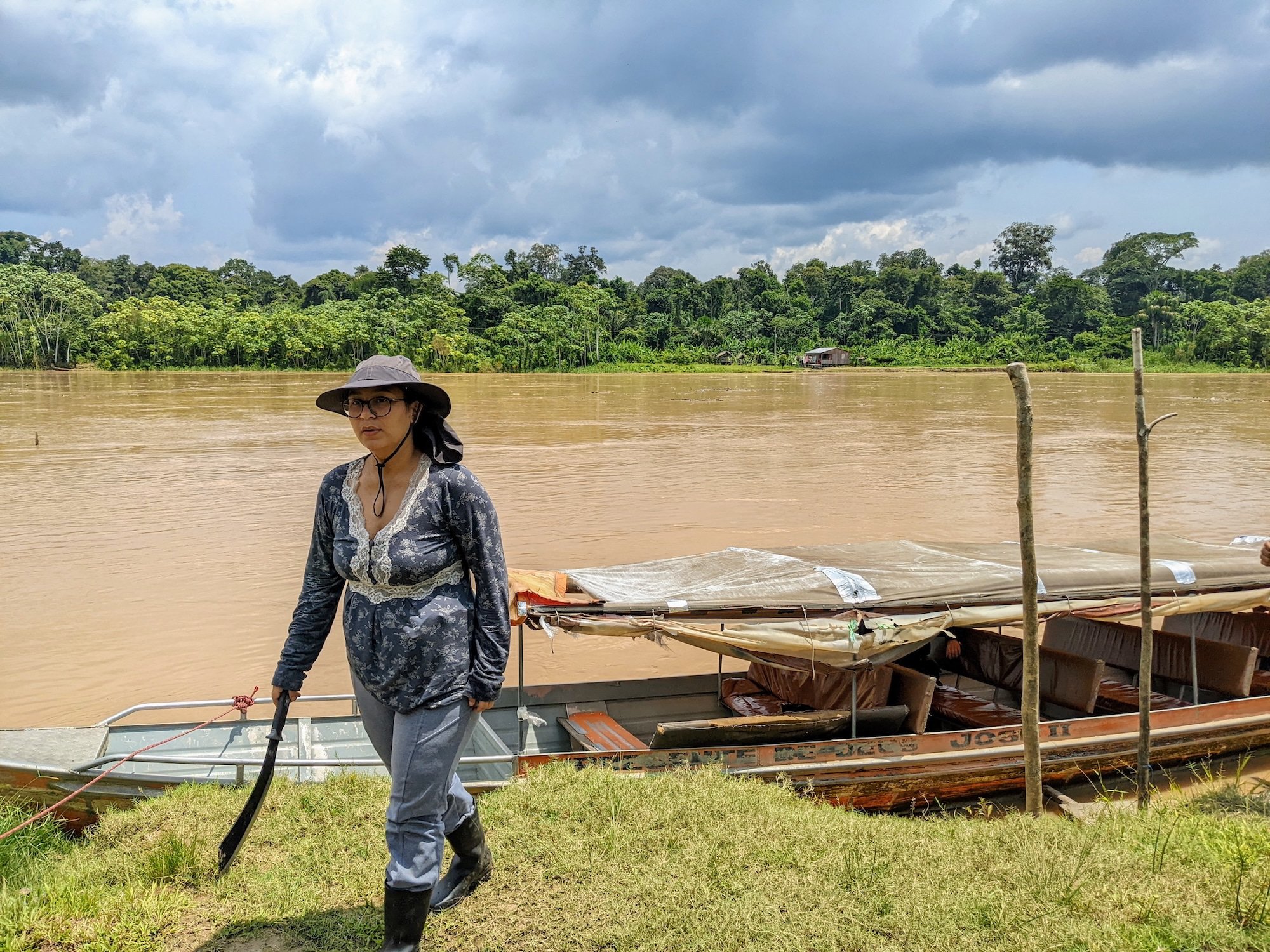Book Review: Wild Chocolate
Rowan Jacobsen with ancient cacao tree photo courtesy of Rowan Jacobsen
In his new book Wild Chocolate (October 2024, Bloomsbury) food journalist and author Rowan Jacobsen achieves the seemingly impossible: making a book about cacao genetics unputdownable. Across 250 pages of fascinating, witty and insightful prose, Jacobsen takes readers on a whirlwind adventure through time and space to discover the soul of cacao.
A Walk on the Wild Side
Wild Chocolate book cover
In the book’s first chapter we learn about how Jacobsen’s fascination with wild cacao is triggered in 2009, with a taste of Felchlin’s now-legendary Cru Sauvage bar. ‘It melted like silk,’ he says. ‘The flavor dove into a deep dark place, and then, just when I thought I had a handle on it, the bottom fell out and it dove some more. The aroma was rich and spiced, a tobacco barn in August.’
This mind-expanding flavor experience inspires Jacobsen’s 2010 trip to the source of Cru Sauvage, deep in the heart of the Bolivian Amazon. There, he meets German agro-forestry expert and wild chocolate pioneer Volker Lehmann, who works with local indigenous communities to harvest ancient cacao in the jungle. Jacobsen’s ensuing cacao sourcing trip with Lehmann leads to run-ins with gun-toting drug smugglers, deadly ants and a tropical flood. The author’s dedication to his subject is never in doubt.
The good, the bad and the ugly
3 pods from 3 cacao varieties photo credit Rowan Jacobsen
Chocolate made with truly wild cacao is relatively rare, but Jacobsen cleverly uses this niche as a platform to analyze the entire chocolate industry: past, present, and future. Via a celebration of heirloom cacao varieties that were cultivated by Mesoamerican cultures over 4000 years ago, he ingeniously follows the history of cacao, plotting its global journey and explaining how we ended up with the mass-produced, homogenized, and ethically troublesome chocolate that dominates today’s market.
Jacobsen doesn't shy away from the dark side of the chocolate industry. He offers a succinct and well-researched account of the human rights and ecological issues that plague commodity cacao supply and ‘big chocolate’. However, the book is so compelling because it offers positive solutions, telling the captivating stories of inspiring people who are changing the system and saving chocolate for future generations.
Cacao renaissance
Luisa Abram with machete photo credit Rowan Jacobsen
Throughout the book we follow the interweaving journeys of several cacao fanatics and ‘choco-nerds’. We take an epic river voyage in the Amazon rainforest with Brazilian chocolate maker Luisa Abram, in search of lost cacao that contains magical flavors. With support from craft chocolate educator and distributor Matt Caputo, Abram manages to save a genetically unique cacao variety from extinction and uses it to create some ‘God-level’ chocolate.
In Belize, we learn about Jacob Marlin’s conservation work with the Belize Foundation for Research and Environmental Education (BFREE), and how he spearheaded a project to preserve over 1000 acres of untouched Belizean rainforest. Cacao is an unusual crop because it thrives with little sunlight under a rainforest canopy, and Marlin’s project has proved both the economic and sustainability potential of wild cacao ‘farming’.
Emily Stone with a Mayan cacao family photo credit Rowan Jacobsen
Also in Belize, we join Emily Stone, co-founder and CEO of Uncommon Cacao, and a transformative figure in the cacao and chocolate industries. Stone’s awe-inspiring efforts have revolutionized cacao trade, creating a transparent system that champions smallholder farmers, biodiversity and heirloom cacao preservation. Uncommon Cacao supplies many of the world’s best chocolate makers with very rare beans that offer exceptionally diverse flavors. Read more about Emily Stone and Uncommon Cacao.
Similarly, Alejandro Zamorano of Revival Cacao is working to source and save heritage cacao in Southern Mexico. Jacobsen joins Zamorano and others on a visit to heirloom cacao farms, followed by an archeological site where some of the earliest evidence of cacao consumption was unearthed. The group also embarks on a mission to find a rumoured wild cacao patch near the Guatemalan border, only to have the trip cut short by the threat of a mysterious, heavily armed, animal-sacrificing and drug-trafficking cult.
In search of authenticity
Wild Chocolate is more than just a book (and podcast); it feels like a spiritual quest. Jacobsen’s travels to remote corners of the world are a search for wild cacao, but they’re also a pursuit of authenticity, meaning, and connection. Along the way, he encounters many people and practices that inspire a sense of purpose, as well as a deeper appreciation for the beauty and mystery of the natural world. ‘What I didn’t know was that like-minded people all over the world were also reconsidering what chocolate could be,’ he says. ‘We were part of a pattern, a new way of thinking that had been percolating for years in the chocolate underground. And, as these things do, it was ready to burst above the surface, seemingly everywhere at once. Chocolate needed to change. And it was time.’
Through his captivating blend of storytelling, cultural anthropology and ecological insight, Jacobsen captures the complexity and beauty of one of the world’s most fascinating and undervalued foods. This is a book with an important message: cacao is in danger, and these rare, wild varieties likely hold the key to its survival.
A call to chocolate lovers
Jacobsen’s humor, relatability, and intrepid shenanigans make this book appealing to a wide audience, including chocolate connoisseurs, sustainability advocates and lovers of travel and adventure. His sensory descriptions are incredibly evocative, leaving readers compelled to get their hands on some wild chocolate as soon as possible.
For over 20 years craft chocolate aficionados have worked tirelessly to shift perceptions of how chocolate should taste, how much it should cost, and how the system of cacao supply should be rebuilt. Wild Chocolate adds a vital voice to the advancement and celebration of that movement.





